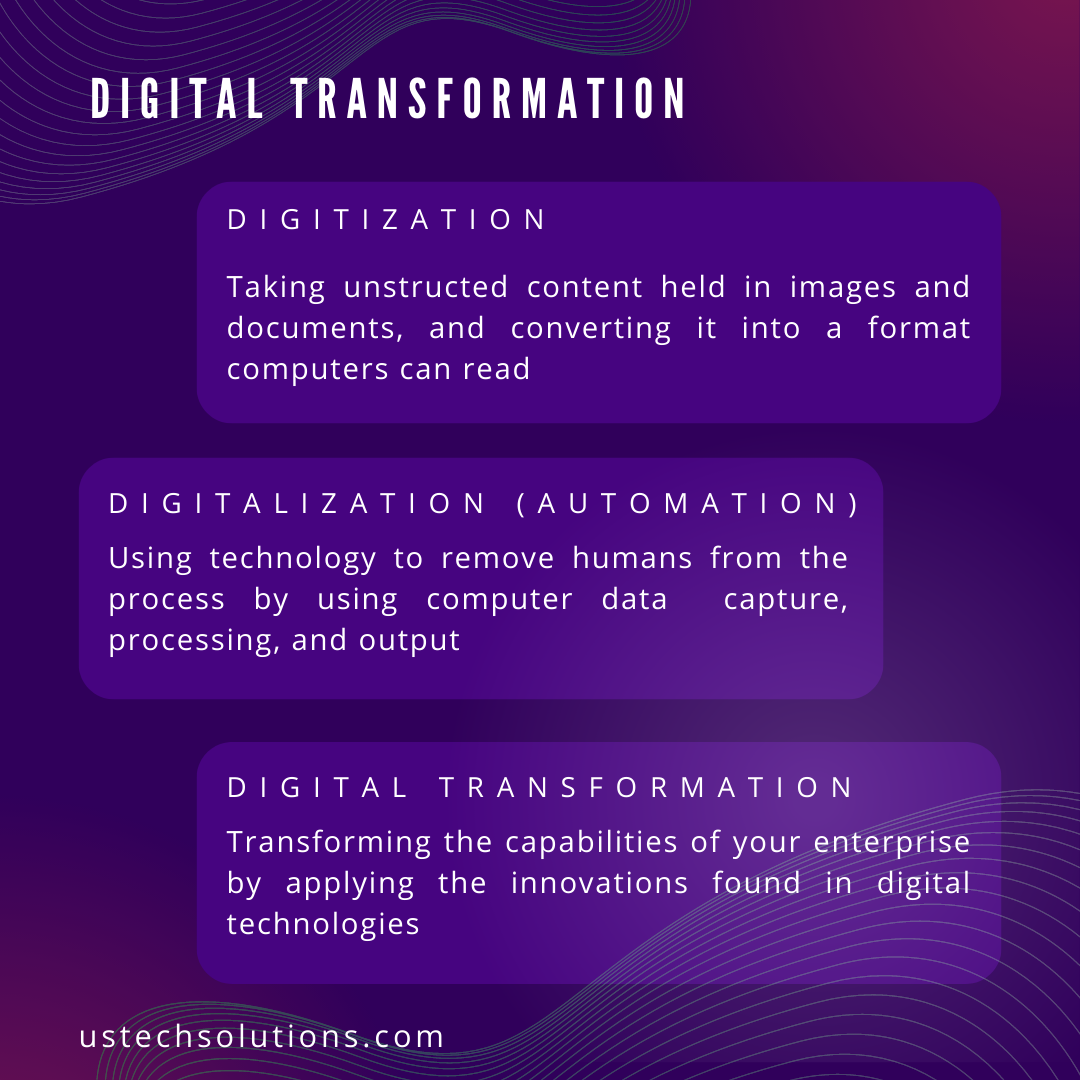
Over the past half a dozen years, technologists have discussed little else than digital transformation. It has created boardroom roles (Chief Digital Officer), spawned countless projects, and resulted in a multi-billion dollar industry for management and technology consultants. But is the challenge in getting non-technical colleagues to grasp it has been confused by the fact the term itself is wrong?
How digital transformation got hijacked by
suppliers
It wouldn’t be the first technology concept that got distorted by suppliers. IT product and service vendors have a habit of interpreting IT terms to suit their own ends, to shoe horn their own solutions into markets where they ‘almost fit.’ That’s certainly happened with digital transformation.
DIGITIZATION
Many of the projects I’ve seen described under the banner of digital transformation (DX) are nothing more than DIGITIZATION projects, where hardcopy paper forms have been migrated to digital records. Adobe’s Portable Data Format (PDF) was launched in the early 1990’s and has become the de facto interpretation of a digital document, even though it is nothing of the sort. Essentially, PDF interprets text strings into a data + metadata format that allows machines to read the data. That’s a VERY small leap for mankind.
DIGITALIZATION (AUTOMATION)
Many of those DX projects that weren’t to do with digitization over the last decade were more about DIGITALIZATION, i.e., transitioning processes from human-in-the-loop activities by applying machine-to-machine automations.
Let’s face it, while the digital toolkit has been improved by software bots, cloud computing, AI and big data, you could similarly choose to use Business Process Automation (BPA) tools and SQL algorithms that date back to the 1990’s to perform those automations too. Nothing particularly innovative or game changing about that.
DX=TRANSFORMATIONS THAT ARE ENABLED BY DIGITAL TECHNOLOGIES
The American Author Rumen Alam said, “Brevity doesn’t allow for nuance.’ Sometimes, that lack of detail brevity encourages distracts us from the objectivity of a term. Digital Transformation is only such when a business applies digital technologies to do better things, not just do things better.

Get the words in the right order and it helps everyone to ‘get’ what Digital Transformation is about
It was the consulting firm Capgemini, in collaboration with the MIT Center for Digital Business, that coined the term “digital transformation” in late 2011. In short, their brevity has crippled the general understanding of what it’s all about ever since. We shouldn’t be describing this game-changing evolution in business as Digital Transformation, but as Transforming Digitally.
The fundamental problem with switching around these words is that business people examine the new technology toys in their kitbag, and begin their journey by trying to see what they can do with each of them, rather than starting with appreciating and prioritizing the capabilities that their business needs, and then applying digital technology to those challenges. The start of the journey should be the business outcomes you are trying to achieve such as:
– Find better ways to identify and reach customers
– Simplify customer onboarding
– Reduce time to value on software developments
– Empower customers to serve themselves
– Innovate product designs faster
Re-align your digital transformation
There’s generally always time to correct a plan, even when it began on the wrong foot. If you find yourself in the middle of a digital transformation program with wheels falling off, I suggest you take a step back and map your capabilities. To qualify: while processes describe HOW something is done, capabilities describe WHAT needs to be done. Capabilities are a far more reliable friend and start-point for digital transformations.
Failing to prioritize those capability changes that will make the biggest impact on a business runs the risk of you making DX investments in the wrong places, missing out opportunities to gain quick-wins and short-term ROIs.
So, don’t get people confused—ditch the brevity and simply talk about transforming digitally. You’ll be amazed how much easier it becomes for lay people to grasp.


Recent Comments